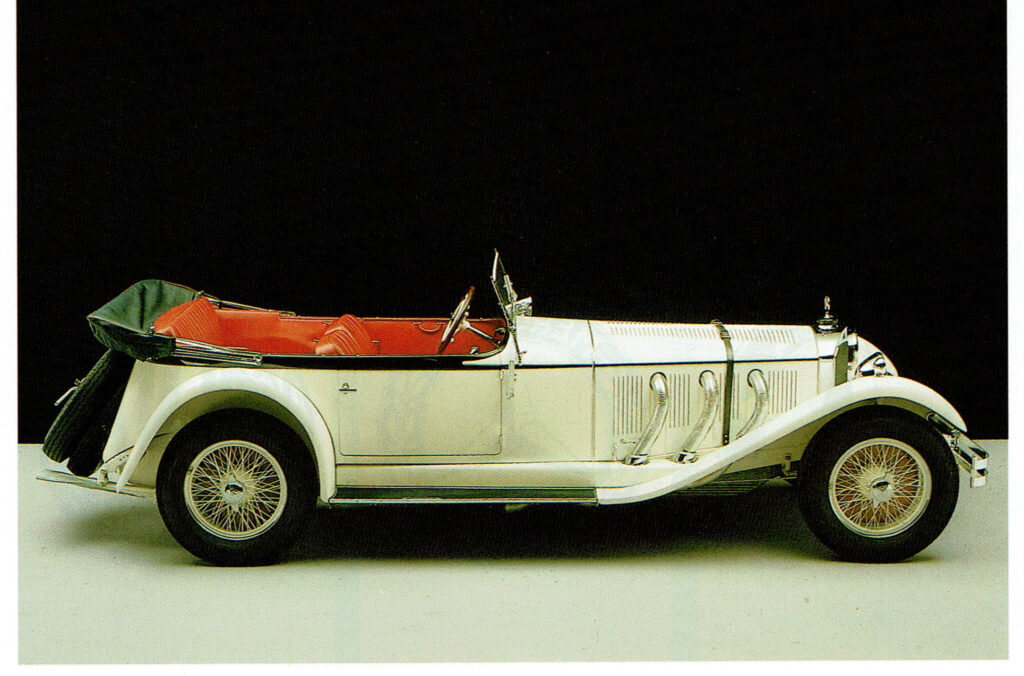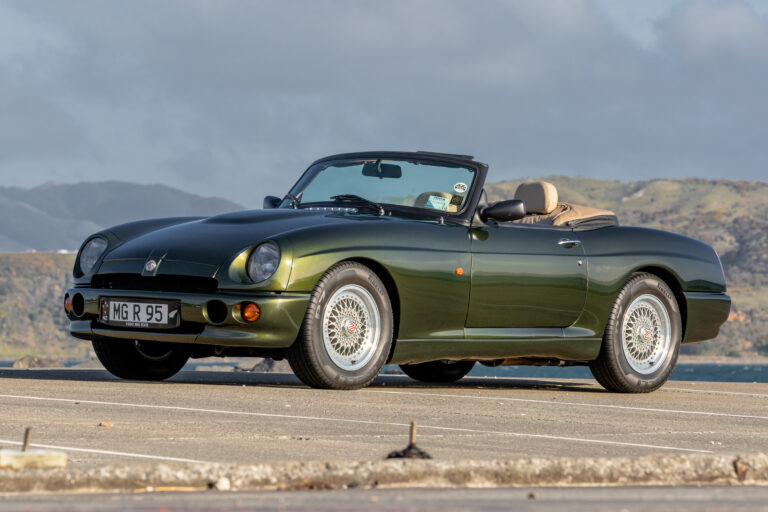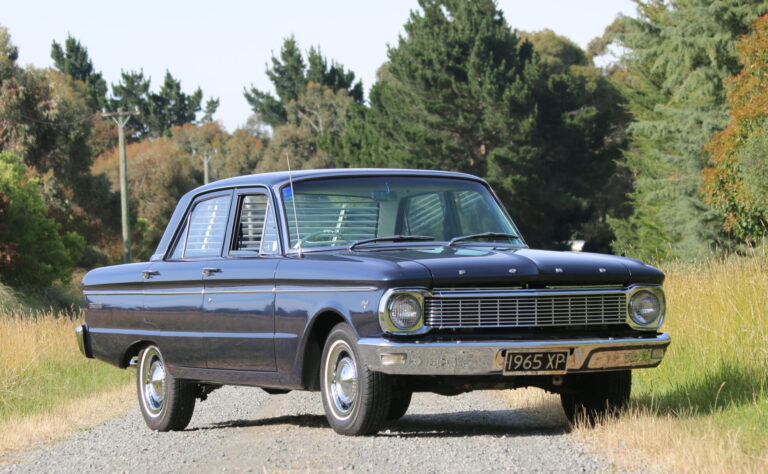Home Kidston did a lot more than tackle the Muriwai sands during his New Zealand adventure nearly 90 years ago. Donn Anderson uncovers the fascinating story behind the Kidston family and a special Mercedes-Benz
By Donn Anderson

Lieutenant Home Ronald Archibald Kidston had more than the Royal Navy on his mind when he left Britain on MV Rangitane in September 1933 bound for New Zealand. Joining the crew of HMS Diomede at Devonport naval base in Auckland for an extended stay, Kidston’s baggage raised a few eyebrows as it included a rare Mercedes S-type W06 tourer, a de Havilland DH.60 Gipsy Moth 2 racing biplane, a Vosper Jolly speed boat, and a racing keeler. Clearly Kidston was going to be busy when not on duty aboard the naval ship.
Home, or “HK” as he was often known, added a dash of international flavour when he arrived with his exotic German machine on the Muriwai beach sands in March 1934 for the annual championship organised by the Muriwai Motor Racing Club Limited. The supercharged Mercedes created high interest but had spark plug problems and was unplaced in four races. Kidston said the Roots blower only came in “when you put your foot down and if you held it for too long the plugs became incandescent”.
Meanwhile the feature event, run “over 10 miles and 19 turns” according to the programme, was won by the Bugatti of Claude Edwards. However, Kidston did win the 200 yards acceleration test, beating the Roosevelt of George Smith. And Kidston entered his car for a Mrs Brook to drive in the ladies race, but she failed to figure in the results. The Auckland newspapers of the day reported the “big machine was handicapped by the many turns and by the shortness of the half-mile straights” that prevented the powerful Mercedes from stretching its legs, although it showed occasional glimpses of its exceptional speed.
Undaunted, Kidston returned to wet sands at Muriwai on 4 May 1935 with his car now sporting an easily removable, locally crafted single-seater body mirroring the design of Mercedes racing cars. It was predicted the S-type would reach record speeds on New Zealand soil and this time Kidston won the championship event from the Brooklands Riley of Arthur Dexter. George Smith had been challenging the Mercedes when his much modified supercharged Austin Seven caught fire. In practice the previous day, third gear in the Mercedes was stripped and could not be repaired in time for the racing. Despite the loss of third gear, the Mercedes was timed over a flying mile at 119.8 miles an hour (192.9 km/h) as the legendary whine of the mechanicals excited onlookers.
Whether or not the new sports body for the car was by design or accident is questionable. Kidston was something of an early petrolhead, teaming up with Paymaster Lieutenant John Bennett as co-driver in an attempt on the Auckland-Wellington road record. They only made it as far as Meremere before crashing into a swamp and hitting a tree, badly damaging the fabric-bodied car and themselves. Kidston suffered three broken ribs and a painful impact to his ‘private parts’, while Bennett fractured his skull. The single-seater body was made by Cavanagh and Company in Auckland and the car repaired while HK recovered in an Auckland nursing home.

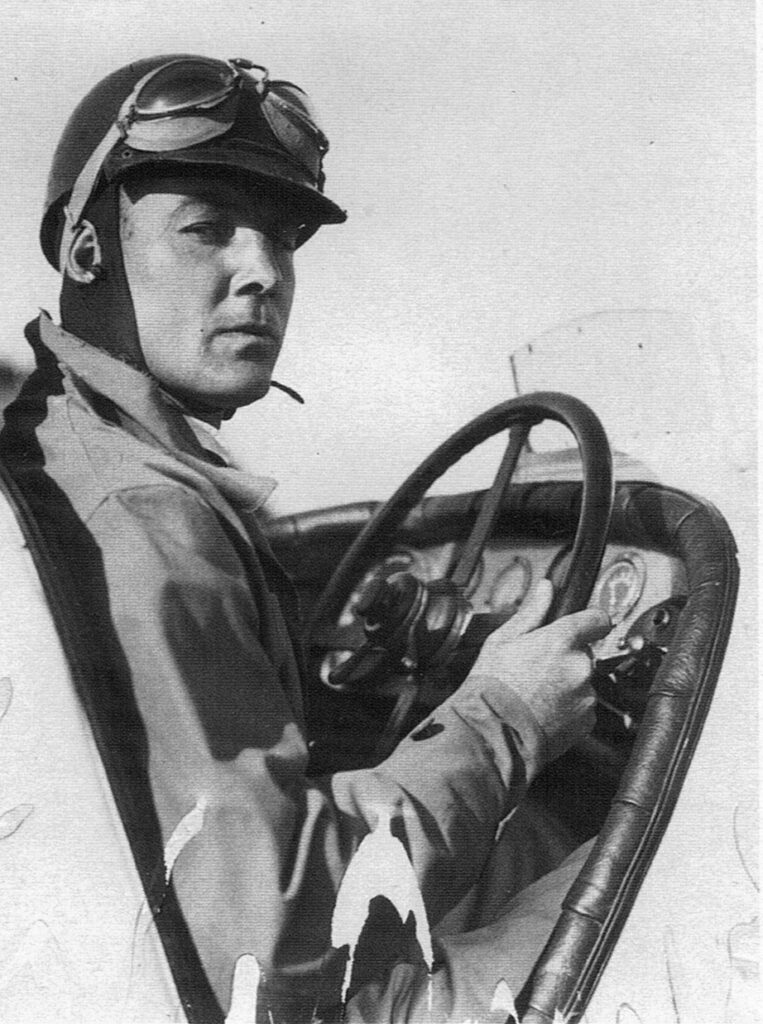
DRIVING WITH ABANDON
The local media enthused over the Mercedes, with one Auckland newspaper reporting, “With its streamlined bodywork, its great size and its exceptionally long bonnet, housing a supercharged six-cylinder motor of huge proportions, the Mercedes is a most impressive machine. Chromium exhaust pipes running from the motor through the near side of the bonnet to join a large tail assist in creating a fine appearance. The car is almost identical with the models with which the famous German driver Rudolf Caracciola swept everything before him in Continental racing in 1930.”
At the 1935 Muriwai meeting Kidston had as a back-up car a more sedate Essex Terraplane with a two-seater coupe body. He ran this in the standard stock car event, starting from scratch and apparently driving with fine abandon to pass the whole field and winning the two lap, sub-six minute sprint.
HK donated a trophy to the New Zealand Motor Racing Drivers Association to be presented at the Queenstown Road hillclimb event in Auckland. He said he considered hillclimbing as one of the most interesting and spectacular phases of motor sport and the first recipient of the Kidston trophy in 1935 was Gerry Mathieson in his famous Miller.
Kidston had acquired the Mercedes second-hand, from Freddie Richmond at the Mayfair dealership Kevill-Davies and March in London in 1929. Richmond, who raced Austins and early MG Midgets and established the Goodwood circuit following World War II, was the grandfather of the present Duke of Richmond.
Baron von Loen had ordered the car new as a rolling chassis in Berlin in 1927 but did not take delivery and it was sold to Tom Thistlethwayte in England, who commissioned Vanden Plas to fit an open touring body in right-hand drive. Tom raced and won with the car at Southport Sands and the Ards TT in 1929. Edward Louis Mayer, a London-based Mercedes enthusiast, was the next owner before Kidston became the fourth name on the ownership papers. Following the car’s departure from New Zealand it was stored at Brooklands during WWII, sold to America, and subsequent owners included balladeer Roy Orbison. With its distinctive twin spare wheels, the magnificent Mercedes underwent a full restoration 30 years ago and was acquired by Dieter Dressel in 1997, competing in several European classic car events in more recent years.
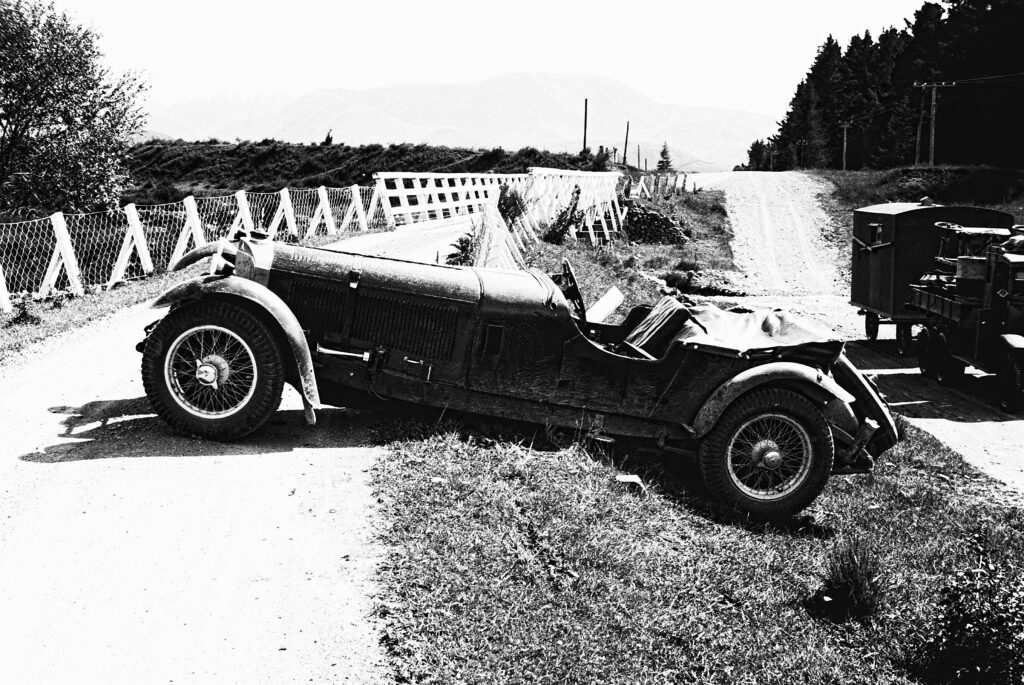
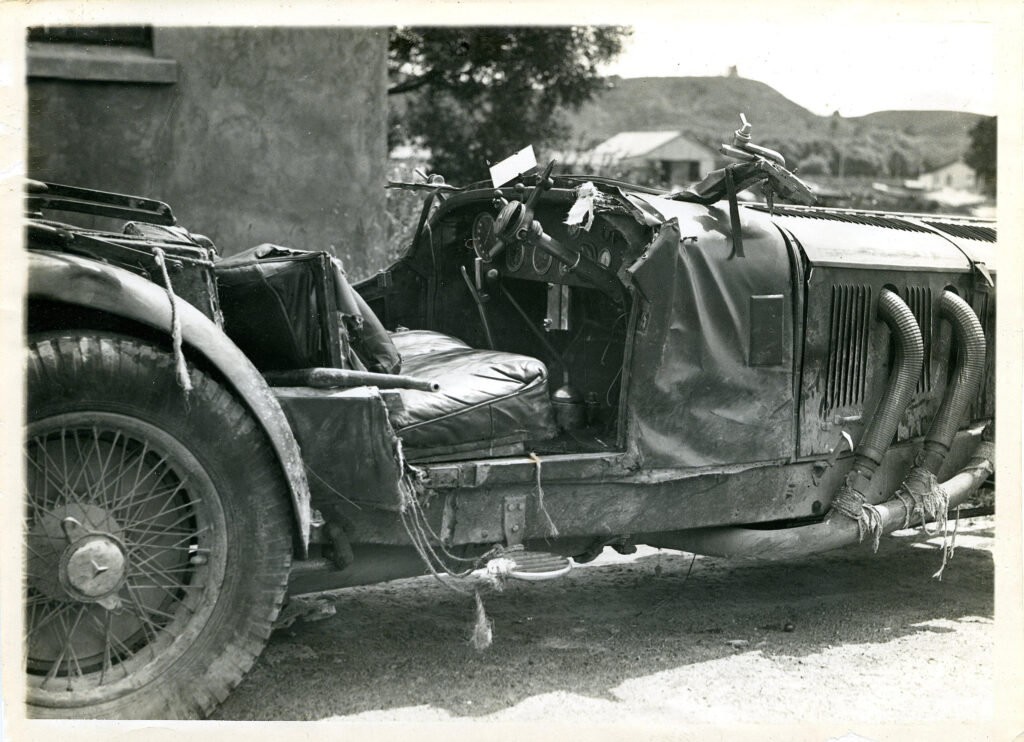
PORSCHE’S MERCEDES
Labelled the 36/330 in the UK, the highly desirable two-seater’s 6,789cc engine developed 132 kW (180bhp) and had a top speed of 178km/h. When the model was further developed as the shorter wheelbase SSK — German for Super Sport Kurz, or Short, for short wheelbase — the engine bore was increased to give 7,068cc capacity while power climbed to 166kW (225bhp) and maximum speed rose to 192km/h. Designed by Ferdinand Porsche, just 146 were made up until 1932 and only five are known to exist today. The SSK was described as the ultimate super sports car of its time and at a UK Bonhams auction in 2004 one example fetched an astonishing US$7.4 million.
Huge enthusiasm for early aviation and things automotive were always on the cards for Home Kidston. His brother Glen was 11 years older, a courageous sportsman and a famous aviator who made his whole life an adventure. As a young teenager in the Royal Navy, Glen survived being torpedoed twice by the Germans during World War I and his personal cars included a Salmson, Peugeot, Chrysler, and Hispano-Suiza. In 1929 the older Kidston survived a major crash at the Isle of Man TT race and just months later was one of two survivors when the Lufthansa Junkers G24 plane in which he was flying from Croydon to Amsterdam crashed in Surrey. It was his second air crash, yet within a few hours he returned to the air swathed in bandages.
Glen became one of the Bentley Boys in London during the late 1920s and a Bentley team driver. He teamed with Jack Dunfee in a 4½-litre Bentley to finish second in the 1929 Le Mans 24 Hour race and the following year won the long distance Le Mans event with Woolf Barnato in a Bentley Speed Six, averaging a record 122.111km/h. In 1931 Glen flew his Lockheed Vega monoplane from Croydon to Cape Town on a mission to establish a commercial air service in South Africa. Days later, and sadly aged just 32, he was killed in a borrowed de Havilland Tiger Puss Moth biplane that crashed in windy conditions in Natal.
Home Kidston was born in Chelsea’s Cadogan Square in 1910, and his first car as a 14-year-old was a Morgan three-wheeler. During his Eton education, he upgraded to a Type 37A Bugatti, and then owned an MG K3, a Bentley 4½, and an Alfa Romeo 8C-2300. Service did not prevent him from indulging in fast cars, including a Bugatti he ordered in a Nice showroom in 1938 which he kept until 1955.
HK finished second in the 1930 Kings Cup Air Race and had several adventures flying the Gipsy Moth in New Zealand before selling the small aircraft here in 1935. Fully restored in New Zealand, the historic biplane now resides back in Britain and was reunited with the Mercedes at Goodwood in 2010. As well as several daredevil flights, Kidston’s high-speed road driving often put him in trouble with the law. He had several attempts at breaking the Auckland-Wellington record, recalling an Auckland policeman named Inspector Jones who would sit at the roadside with a tin of Players cigarettes, waiting for HK to speed past in the Mercedes. Apparently he never caught Kidston.
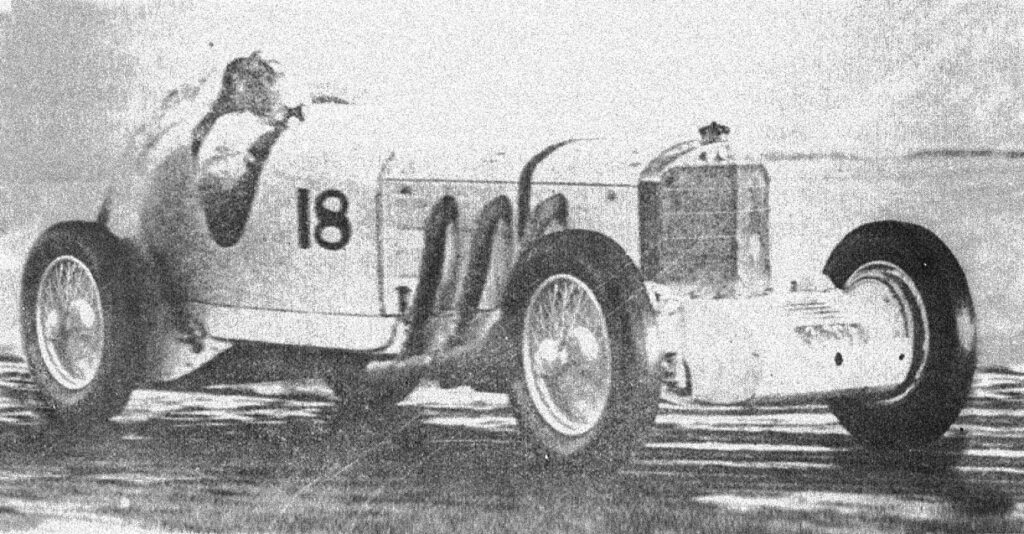
ANNOYING THE MAGISTRATE
The Gipsy Moth proved handy during one escapade when Kidston left the road during a high speed jaunt on the Picton road near Blenheim. HK had his lawyer flown to Blenheim from Wellington in the Moth to attend the court hearing in February 1934, where the Englishman was convicted of dangerous driving, fined £20, and lost his driving licence for two years, although it was later reinstated. A witness said that the defendant drove a racing car — the Mercedes — at 60 to 70 miles an hour and crashed into a ditch. “The car was replaced on the road, but less than a mile further on it again got into a ditch,” he said.
The police said the defendant had substantial means and a fine would be no deterrent, while the magistrate described Kidston as a “nautical road hog”. The magistrate said, “I must put a stop to this gentleman. I am not going to have him driving about the country like this,” said the report on the court case in the 8 February 1934 edition of The Otago Daily Times and other New Zealand newspapers.
His father’s reticence for HK to join the navy was likely influenced by his older son’s twice narrow escape from death in World War I, yet Kidston’s successful naval career saw him become a Lieutenant-Commander and it lasted until he retired in 1947. During World War II, HK served as an anti-submarine officer aboard HMS Kelly under Lord Mountbatten and was then promoted to lieutenant-commander on his own destroyer, HMS Escapade, in the Western Atlantic until December 1945. In the late 1940s he returned to farm in Dorset and in 1976 moved to Italy to grow olives and wine.
Kidston’s first wife, who he married in September 1935, was Lady Georgiana Curzon, daughter of the fifth Earl Howe who won the 1931 Le Mans 24 hour race while in parliament and was co-founder of the British Racing Drivers Club, serving as president until his death in 1964. HK later married Eleanor Keith, an American heiress, and his third wife was Erica Lanz. He had three sons and in 1996 passed away aged 86 in the wake of a remarkably eventful life.
Kidston always had a soft spot for Mercedes and two decades after his New Zealand adventures with the S 36/220 he couldn’t resist becoming the first British owner of a Mercedes 300SL Gullwing in 1955 — a car that is still in the Kidston family along with the Gipsy Moth. He collected the silver Gullwing from the Sindelfingen factory, visiting the Nurburgring before driving to Italy to watch Stirling Moss win the Mille Miglia in a 300 SLR. Home-bound Kidston had an incident with a Fiat 500 Topolino in Italy, necessitating a quick stop for a dent to be repaired.
Kidston’s son Simon has inherited the same love of motoring and has operated a Geneva-based car collectors’ consulting company since 2006. A charismatic figure in the classic car world, Simon began his driving with a Fiat 500, progressing to ownership of two Lamborghini Miuras, and writing a book on the Miura in 2010. He created the high-profile annual Ferrari auction at Gstaad, has been head judge at concours events, and a commentator for the Mille Miglia historic rally. “In 2050 people will still collect cars,” he says.
In 2016 Simon Kidston handled the sale of no fewer than four McLaren F1 road cars. His stable includes a 1938 Bugatti Type 57C built for his father, and his dream garage would be a Mercedes 300 SLR, Ferrari 250 LM, and Bugatti Royale. A 1924 short chassis Hispano H6C built for Glen Kidston is now owned by Simon, who is having it restored to original configuration in time for Pebble Beach in 2024.
Seemingly having never a dull moment throughout his life and still flying in his seventies, HK always retained his passion for speed and for cars of all types. “He loved his time in New Zealand,” says Simon. “I still have his battered New Zealand road map which he always kept.”
Describing his father as “a lifelong car guy”, Simon remembers his dad ferrying him to school in a new, bright yellow Porsche 911 2.7 RS acquired in 1973 — and this car remains in the family. In later years Kidston also owned a Mini Cooper and in his 80s was intrigued by the Renault Twingo. At the time they were unavailable in Britain so he flew to France, purchased one of the little Renaults, had lunch, and drove 1,000 kilometres home. Once an enthusiast, it seems, always an enthusiast!
FOOTNOTE: Our thanks to Simon Kidston who provided selected images in this feature and was helpful in backgrounding some of his father’s history.
